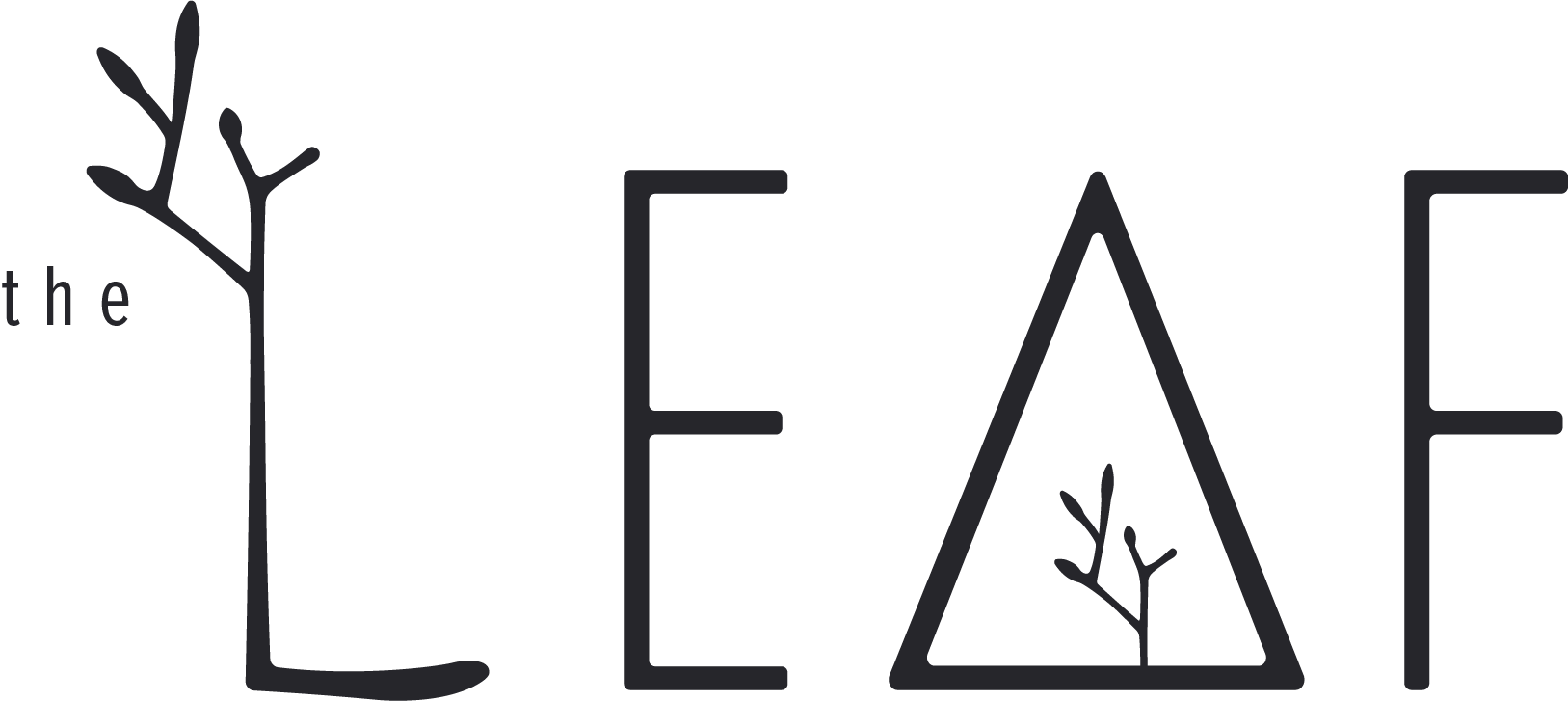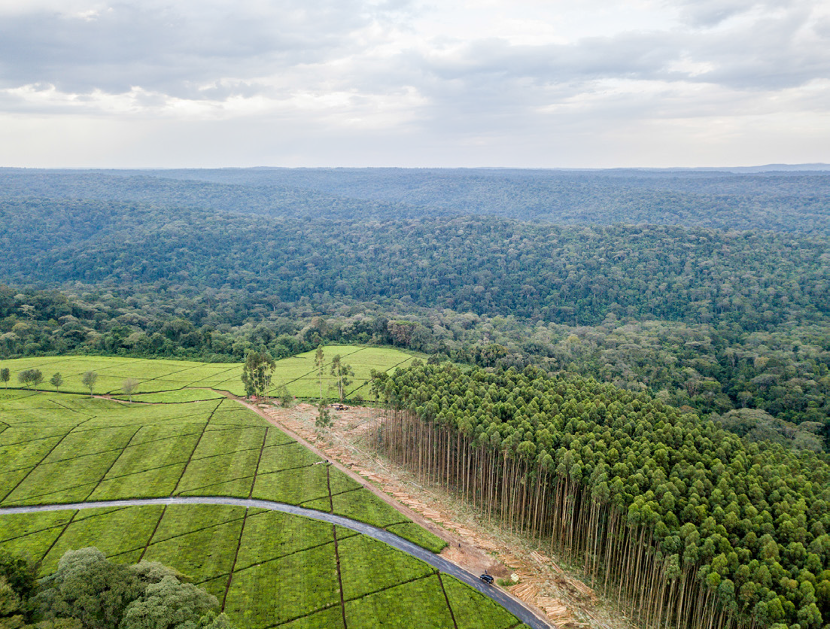Kenyans Seeing the Forests and the Trees
Recognising the distinction between tree plantations and natural forest restoration and conservation
Tea estate juxtaposed with tree plantation and natural forest (Patrick Shepherd/CIFOR)
Tree planting was a ubiquitous theme for me growing up in Kenya in the 80s and 90s. My parents planted hundreds of trees on the family farm, broadcast media exhorted anyone that cut down one tree to plant two, dignitaries were required to plant trees when officiating ceremonies, and Nobel Peace Prize laureate Professor Wangari Maathai and members of her Greenbelt Movement crisscrossed the countryside fearlessly advocating for the conservation of natural forests and rallying rural communities to initiate tree nurseries propagating seedlings of indigenous tree species.
Against this background, one could be forgiven for assuming, as I did, that most Kenyans hold a nuanced understanding of the ecological value of natural forests beyond trees’ commercial value as fuel wood and timber. My assumption was however challenged on observing an increasing penchant for planting fast-growing exotic tree species, over slower-growing indigenous varieties. This short-term consumerism stance is understandable from the perspective of the smallholder whose aim is to create a woodlot for domestic use and income generation. It is also understandable from a commercial timber production perspective. On the other hand, from a broader ecological perspective, this approach has inevitably led the onset of massive chinks in Kenya’s ‘natural green armor’.
In a 2018 report, Kenya’s environment ministry revealed that national forest cover was estimated to be in the region of 7.4% of the total land area – a far cry from the recommended global minimum of 10%. Also, closed canopy forest cover (mature, largely natural forests) stood at about 2% of the total land area, compared to the African average of 9.3% and a world average of 21.4%! It was further estimated that in the years preceding the report, Kenya’s forests were being depleted at the alarming rate of about 5,000 hectares per annum, resulting in an estimated annual reduction in water availability of approximately 62 million cubic metres [1].
The enormity of what is at stake is not lost on Kenyans who have begun witnessing the ecological consequences of deforestation and forest degradation. Take for instance the increasing occurrence of calamities such as landslides, mudslides and floods witnessed in the Counties of West Pokot and Elgeyo Marakwet where massive deforestation has depleted the forests that played a major role in stabilizing soils, storing rainfall water in catchments, and naturally controlling water flow downstream [2]. Consider also the threat of disappearance facing the mythical Mara River – the setting for the annual wildebeest migration recognised as one of the wonders of the natural world – which has its source in the Mau Forest Complex that has lost almost 37% of its original area since independence in 1963 [3]. Even more daunting perhaps are insidious less mediatised threats such as the loss of up to 90% of the Coastal Forests of Eastern Africa, a biodiversity hotspot whose forests are home to three endemic and highly threatened monkey species and two endemic bush baby species [4].
Fortunately, as in much of the world, Kenya is currently experiencing a convergence between the mindsets of older generations that recall the role played by natural forests and indigenous trees, and who are committed to contributing to reforestation and forest conservation for posterity, with the mindsets of Millennials and Gen-Xers attentive to the science and determined to roll back the effects of climate change, the loss of productive land, and the diminution of biodiversity. Kenya’s participation in activities such as the Africa Forest Landscape Restoration Initiative (AFR100) [5] and the Bonn Challenge pledge of 5.1 million hectares towards the global goal to bring 350 million hectares of degraded and deforested landscapes into restoration by 2030 is a demonstration of this convergence [6]. Additionally, legislators and policy-makers have anchored this collective stance, setting a minimum national tree cover target of 10% in the Constitution, and incorporating Kenya’s REDD+ commitment in national policy framework and development strategy [7].
It is however not sufficient to simply hop onto the global tree-planting bandwagon. We have also had to recognise that by replacing natural forests that have had millions of years to adapt to their natural environment, with tree plantations, we run the risk of throwing delicate ecosystems out of balance as monocultures of exotic tree species deplete water levels and suppress biodiversity [8]. Moreover, as a climate change mitigation strategy, tree plantations are much poorer at storing carbon than are natural forests that develop with little or no disturbance from humans. The regular harvesting and clearing of tree plantations releases stored CO2 back into the atmosphere every 10–20 years. By contrast, natural forests that comprise a broad range of different indigenous tree species work in concert to sequester carbon for many decades while regulating hydrological cycles, preventing soil erosion, restoring nutrients to the soil, and promoting biodiversity [9].
In 2013 the Kenya Forest Service carried out a national scale forest mapping using the following definition to characterise forests: “Land spanning more than 0.5 hectares with trees higher than 5 metres and canopy cover of more than 15%”. GIS analysis of the mapping revealed that forests in Kenya covered 4,138,000 hectares in 2010, and could be divided into 93% natural forests, 4.6% plantations, 2.1% bamboo forests and 0.2% mangrove forests, as illustrated in the table below.
Source: GIS analysis of KFS forest cover dataset [10]
A closer look at the data on forest ownership revealed that 76% of natural forests are privately or community-owned trust lands vested in County government, underscoring the centrality of community participation in the restoration and conservation of natural forests. It comes as no surprise therefore that Kenya employs a Participatory Forest Management approach that permits forest adjacent communities to register Community Forest Associations (CFAs) and apply to the Kenya Forest Service for permission to participate in the conservation and management of public and community-owned forests [11]. Thanks to this framework numerous CFAs have emerged, natural forest restoration and conservation efforts have increased exponentially, and success stories abound!
Case in point, since 2009, the Participatory Forest Management approach has formed the backbone of the transformation of Nairobi’s Karura Forest. Working hand-in-hand with the Kenya Forest Service, the Friends of Karura Forest CFA have increased the indigenous tree cover from 25% to almost 50% in line with the objective of returning the 1,000 hectare urban water catchment – one of the world’s largest urban forests – to a natural upland forest ecosystem. Remarkably, Karura Forest also now plays host to the world’s most successful reintroduction of arboreal primates, a remnant Aberdare Mountain population of threatened black and white colobus monkey sub-species [12].
30km north-west of Nairobi, the Kijabe Forest Trust has planted over 150,000 indigenous tree seedlings in an effort to restore degraded sections of the Kijabe strip of the Kikuyu Escarpment Forest. In conjunction with the Kenya Forest Service and local authorities, the Trust has also led efforts to conserve 5,000 hectares of primary forest reserve from illegal logging and charcoal production by recruiting 16 forest rangers, thereby contributing to a reduction in tree loss from a baseline of over 13,000 trees per year in 2013 to under 300 trees today. Conservation efforts have also extended to the promotion and marketing of non-timber forest products, such as Croton and Cape Chestnut seeds for the commercial production of essential oils [13].
A little further afield, since the early 90s, the Ngare Ndare Forest Trust has brought together 6 Community Based Organisations (CBOs), large-scale farms, and ranches bordering the forest to conserve the lush 5,554 hectare natural forest situated at the foothills of Mt Kenya. The Ngare Ndare Forest Reserve, one of the few natural forests in Kenya with an expanding canopy, has served as a vital elephant corridor for centuries, so when farmland begun to encroach on the southern side of the forest the Trust invested in an electric fence entirely surrounding the forest in order to curtail the incidence of human-wildlife conflict [14]. To further alleviate pressure from the surrounding communities on forest resources, the Trust has over the years provided smallholder farms with over 1.5 million fast-growing agroforestry tree species for fuel wood and timber, launched ecotourism ventures 70% of whose income is used to support community development projects, initialed a biogas project to provide an alternative cooking fuel to charcoal and firewood, and donated bee hives for honey production as an alternative source of income [15].
Given this countrywide proliferation of CFAs, there is certainly cause for optimism that by replicating and sustaining the level of commitment demonstrated in Karura, Kijabe and Ngare Ndare, Kenyans can participate in stemming the tide of the deforestation and forest degradation. Kenyans are renown for the dedication and stamina of our long distance runners. If we can succeed in injecting even a fraction of this dedication and stamina into our forest restoration and conservation efforts, and resolve to stay the distance, we are set to reap the rewards for generations to come!
References
[1] http://www.environment.go.ke/wp-content/uploads/2018/08/Forest-Report.pdf
[3] https://wwf.panda.org/wwf_news/?10823/The-Mau-Forest-Complex-and-Catchment-Basin
[4]https://www.cepf.net/our-work/biodiversity-hotspots/coastal-forests-eastern-africa, https://www.cepf.net/sites/default/files/final.easternarc.ep_.pdf
[5] AFR100 (the African Forest Landscape Restoration Initiative) is a country-led effort to bring 100 million hectares of land in Africa into restoration by 2030. AFR100 contributes to the Bonn Challenge, the African Resilient Landscapes Initiative (ARLI), the African Union Agenda 2063, the Sustainable Development Goals and other targets.
[6] https://www.bonnchallenge.org/about-the-goal
[7] Reducing Emissions from Deforestation and Forest Degradation (REDD) is a concept to create a financial value for the carbon stored in forests, offering incentives for developing countries to reduce emissions from forested lands and invest in low-carbon paths to sustainable development. “REDD+” goes beyond deforestation and forest degradation, and includes the role of conservation, sustainable management of forests and enhancement of forest carbon stocks.
[9] https://www.nature.com/articles/d41586-019-01026-8
[10] http://www.kenyaforestservice.org/documents/Forest_Cover_Status_Report_1990-2010.pdf
[14] https://www.kijabeforest.org/


![Source: GIS analysis of KFS forest cover dataset [10]](https://images.squarespace-cdn.com/content/v1/5d728925760f2b00016a3de7/1601894300661-SHHZBONXDAPXDSLX3YED/image-asset.png)